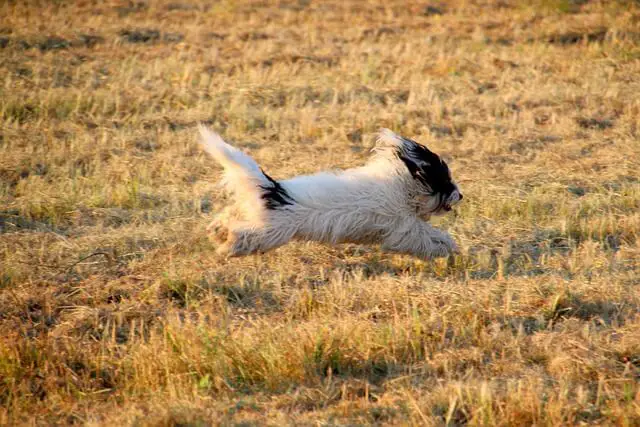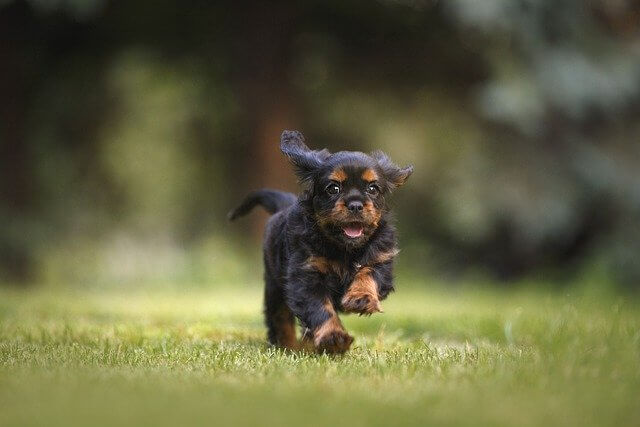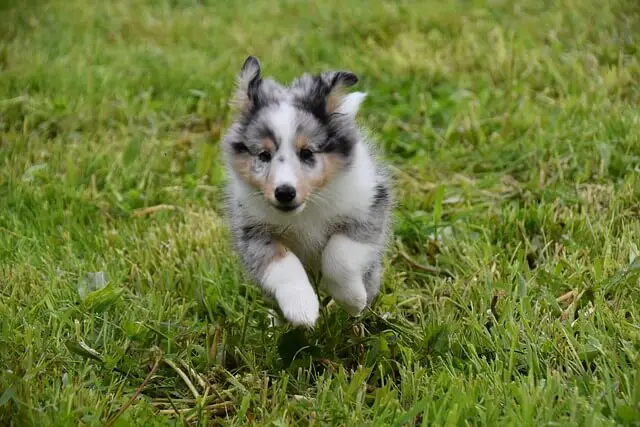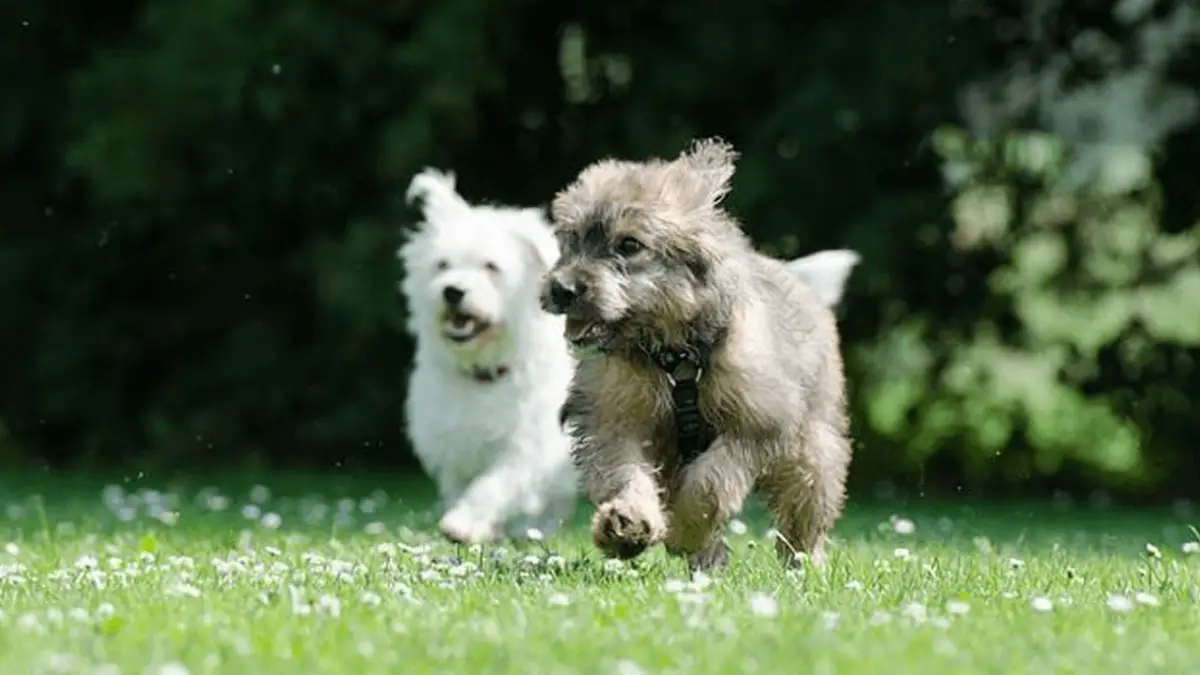How Much Exercise Is Safe For Puppies?
07.04.2022.
Puppies are like little balls of energy. Most new puppy owners wonder how much exercise is safe for their puppies, and many of us try exhausting our pups to get them to fall asleep. However, many puppy owners didn’t know it is possible to overexert puppies to the point of harm. Puppy owners frequently underestimate the amount of safe activity their puppies require. Here’s what you should know about the safe amount of exercise for your puppy.
Why should we be cautious?
Puppies develop and grow pretty fast! There are a number of developing parts of their bodies called growth plates. These are special areas in developing bones and joints where new bone is created, but it needs time to “settle.” Growth plates stop producing bone tissue or “close” at specific times. Once they do, they transform into solid bone. Still, until that happens, growth plates are fragile and can easily be broken by even the slightest trauma. Unfortunately, puppies are prone to colliding with sofas and walls.
RELATED: Puppy Shot Schedule: All About Vaccines
Puppies need normal movement and physical activity to train their soft tissue structures. These structures are made of bones, muscles, tendons, and ligaments. However, these structures also need time to fully develop and reach their final stage where they cannot be easily damaged. Puppies’ health and development can be jeopardized by excessive physical activity, which often happens because puppy owners have no idea how much exercise is actually too much for their puppies.

After a brief period of activity, puppies need to rest in order to recharge their batteries, as you may have noticed. Aging causes them to be awake for longer and sleep for fewer hours. Their playing time is limited, and once they're done playing, they take a break.
As soon as puppies are old enough to go for a walk with us, we have to decide when to put them down for a nap because they enjoy doing things with us. It's all too easy to let them go overboard when you're in charge.
What types of activities qualify as exercise?
Everything a puppy does is physically demanding. Even keeping their legs moving properly can be tiring if they do it for too long. Some clear examples of exercise are training, regular walks, following scents, running, or playing are all examples of exercise.
RELATED: Puppy Alone Time - Here's How Long You Can Leave a Puppy Alone
In some cases, these forms of exercise can drain your puppy’s physical energy. Others, like sniffing, are more mentally challenging. Your puppy needs both physical and mental exercise during the time you spend with them. You should never wait until the puppy is completely exhausted before stopping any specific activity.
How do you know how much exercise your puppy needs?
Because puppies have been raised using a variety of exercise methods and have developed into healthy, strong adults, many people have an opinion on this. However, as we gain a better understanding of canine health and physiology through research, it will be easier to offer general advice.

It is recommended that developing puppies engage in light physical activity. However, that physical activity should be limited to once or twice a day. The general rule says - 5 minutes for every month. For example, a 4-month-old puppy can do 20 minutes of exercise, no more than twice a day. Puppies of all shapes and sizes aren't all capable of this level of physical exertion. Those who have recharged and are ready for more fun may create their own havoc if given the opportunity to play or their owners take them for a quick stroll around the block. Depending on the pup, this may or may not be the case.
RELATED: Best Puppy Treats
You should allow your puppy to rest if they sit or lie down during the playing session. Make sure your puppy doesn’t wander off during playtime. If they appear to be in need of some rest, you should ensure they are given the opportunity to do so.
If you're going for a walk and they get too tired, carry them or give them some time to refuel before you finish. However, you may want to shorten your walks the next time. If you notice that your puppy lacks energy or is easily fatigued, you should see a veterinarian.
Specific needs based on the breed
The physical maturation of some dog breeds is more rapid than that of others. The larger a dog's breed, the longer it takes for its bones and joints to mature. If you have a large-breed dog, you should exercise them cautiously. The amount of time your puppy spends exercising might be better served by breaking it up into smaller chunks.

Learn about the breed of your pup. Consult your veterinarian if you're unsure of how old your dog is or how much exercise they need.
RELATED: How to Stop Puppy Biting?
Working breeds
Working breeds, such as Shepherds, Collies, and Spaniels, are typically incredibly full of energy. If you try to tire them out solely through physical activity, you may end up overdoing it. Instead, allow them to tire themselves out in safe, fenced yards or make them strain their strongest muscle - their brain. Consider games that require them to use their most powerful sense (smell) to find things or toys. This type of exercise requires them to focus, tire themselves mentally, and spend some of their energy on their favorite activity - chewing. These physical and mental games can safely exhaust a puppy without putting too much strain on their developing bodies.
Brachycephalic breeds
Brachycephalic puppies (like Bulldogs or Frenchies) want to be active and participate in fun puppy things just like every other puppy on this planet. However, they often can't keep up because it's impossible for them to breathe correctly and oxygenate their bodies as other breeds can. Keep a close eye on your puppy’s activity levels, and if you notice breathing irregularities while they're exercising or even when they’re resting, contact your veterinarian.

A brachycephalic dog can't easily cool off, so it's not a good idea to take them out for a walk in extremely hot summer weather.
RELATED: How Much to Feed a Puppy - Owner's Guide
Small breeds
Compared to larger dog breeds, smaller dogs mature and fully develop more quickly. The smaller breeds may be able to perform some tasks earlier than their larger cousins. It's important to keep in mind that even though small breeds tend to be energetic, their short limbs make it difficult for them to keep up with larger dogs. Your small-breed puppy needs to be able to walk at their own pace, so make sure that your walks are short and regular.
In conclusion
If you have an energetic breed at home, it is a better idea to include more mental than physical exercise. Look for games and training methods that aren't physically demanding but will make them use their brains. Puzzle games and training sessions that make them to use their nose to discover rewards, like treats, are ideal for working breed puppies. Some breeds, like the Mastiff, are mouthier than others. One of their favorite activities is chewing, so use that to your advantage and provide your puppy with an activity that will tire them out SAFELY.
Learning about the breed of your puppy, following the “five minutes per month of age” rule to their needs, and combining mental and physical exercise should help give your puppy a safe way to spend their energy every day!
World Dog Finder team







Share